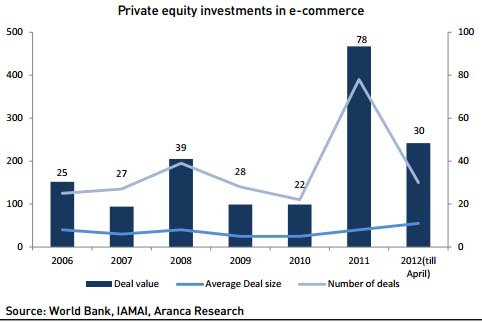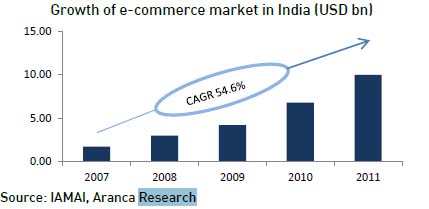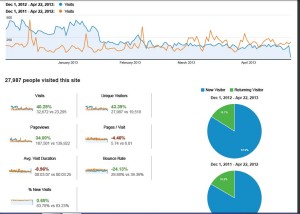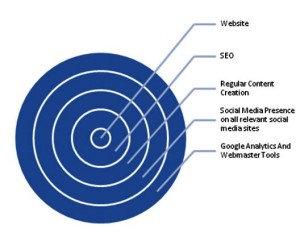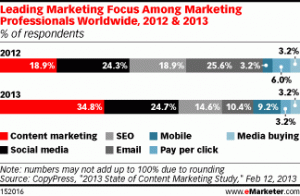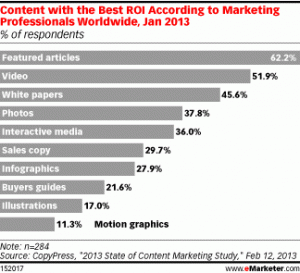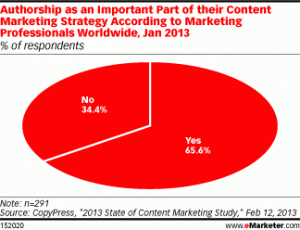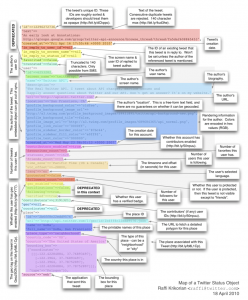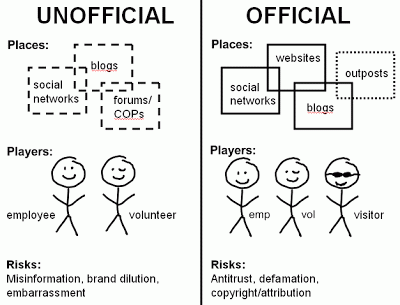- How To Get More Comments On Your Blog Posts
- If Content Is King Then Context Is Queen And The Trust Factor Is The Royal Crown
- Content Marketing Is A Great SEO Strategy But It Is Not The New SEO
- Drawing Professional and Friendship Boundaries At Work
- 5 Most Useful SEO Tools
- The Google Glasses Project - The Future Technology
- The Technical Anatomy, Basics And Beauty Behind A Tweet
- PageRank And A 301 Redirect
- Is WordPress or Blogger better for SEO? Matt Cutts Answers The Question
- Entrepreneurship, The World Wide Web And Women’s Day
- A Short Summary Of What Amit Singhal Spoke At SXSW conference 2013 in Austin
- Google’s Initiative To Help Hacked Sites
- Google: From Google Glasses To The Talking Shoe
- Google Announces The Launch Of Think Insights
- Is Your Blog Content Friendly And Authorship Compliant
- Upcoming Weekend Workshops At AMA To Be Conducted By WebPro Technologies
- Strengthen Your Blog's Rep, Step by Step
- Content Marketing – From Renting An Audience to Earning An Audience
- Some Valuable Content Gems From The B2B Content Conversions Conference April 2013
- The Jeffalytics Google Analytics Periodic Table
- What the Google Glass users see when they look through their Google Glasses ?
- Penguin 2.0 And What Is In Store For SEO In The Next Few Months For Google
- Google I/O 2013 : Just Say “OK Google” To Search Hands Free in Chrome
- Company Logos In Google SERPs using " Organization Mark Up"
- What Is Responsive Web Design And Why We Should Opt For It?
- SEO Is A Necessity, Content Creation Is A Strategy And Social Media Is The Channel
- The Concentric Circles Of Quality Web Presence
- The Digital World Challenge Faced By The Chief Marketing Officers (CMOs) In 2013
- Matt Cutts Answer To : Does using stock photos on your pages have a negative effect on rankings?
- Advanced SEO Means Adapting To WWW Standards Before Google Integrates Them In Search Algorithms
- The Evolving SEO Mindset In 2013 ( 25 Points)
- Google’s New "In-Depth Articles" Feature For SERPs And How To Optimize Your Site For It
- Google Wants Feedback About Small But High-Quality Websites That Could Do Better In Search Results
- The Android Ladoo Campaign - Lets Make Android Delicious
- Google+ Author Attribution And WordPress Sign-In
- The Indian E-commerce Industry Emerging Trends At a Glance
- SMX East 2013 Insights On Topics Related To Organic Search For SEO 2014
- Content , Branding, Research and Strategy As The Root Of Any Internet Marketing Activity
- Understanding The Purpose Behind Each Google Algorithm Update Is More Crucial For SEO
- We Have Moved To Our New Office (Some Pics.)
- SEO Client Conversations : The CC (Client Conversation) Series
- Matt Cutts Asks For Suggestions To Fine Tune Webmaster Tools Further As 2014 Approaches
- Why Do We Need More Quality Content To Get Correlated To Our Web Presence ?
- The Misuse Of Authorship Markup And Publisher Markup
- SEO 2014 The Year Of Positive SEO And The Survival Of The Fittest
SEO 2014 The Year Of Positive SEO And The Survival Of The Fittest
Author : Bharati Ahuja
The Year 2013 has given the most shaking algo shocks to the SEO industry.... Courtesy Google....
But, despite all the shocks and after-shocks of the Panda and Penguin updates the SEO industry is still positive (at least I am and am not going to say ‘I Quit’ for a long time to come) . SEO is still alive with more energy and synergy with the web and the search engines.
In fact as I had mentioned in one of my blog posts in 2011 Why the changes made by Google meant good news for the SEO industry . This was at a time when the whole SEO industry was against the changes being made especially when Google introduced Encrypted Search and the keyword data got taken away from us. http://www.seocopywriting.com/content-marketing/why-googles-recent-changes-mean-good-news-for-the-seo-industry/
In December 2013 we had mentioned the following points to be focused upon for SEO which will be applicable in 2014 too:-
- On Page optimization as per the W3C standards
- Have a web presence on various platforms
- Update your blog regularly
- Co relate web presence with fresh content by blogging, commenting, discussing, sharing links on social media from your own site and blog plus from other authority sites of your industry.
- Have a YouTube video channel and share videos and embed them on site or blog.
- Google+ as of now may not be the most widely used social media platform but it as major Google products in some way or the other converge on Google+ your Google+ account has the potential of becoming your passport to your online identity hence ignoring this platform or not having a presence on Google+ is like applying for a VISA without a passport .
- Submit XML sitemaps for site, blog and video XML sitemaps for videos embedded on site or blog.
- Apply for Twitter Cards and integrate them with your blog once the application is approved by Twitter.
- Integrate FB Open Graph on blogs.
- Integrate Authorship Markup on the blog to co relate your content with your online persona which can lead you to be a thought leader of your industry which in the long run can add to the trust factor.
- Focus on ‘Less Is More’ instead of having 5 posts a week publish 2 posts per week but of relevant in depth information in all forms i.e text, video, infographics, podcast,etc. It’s the quality that counts not the quantity.
- If you cannot create content regularly then curate content.
- Use Schemas for addresses, events, people, recipes, books, ebooks,video, etc.
- Focus on building a community and retaining their trust as your community can play a major role in helping your content go viral.
- As in real life you are known by the friends you keep , in the online world you are known by the people that follow you and the people that you follow.
- In the real world you are what your thoughts are and in the online world you are what you publish and share.
- The above points help you earn links. Let the inbound links get built as a result of quality web presence rather than running after them.
- All the above points have a direct impact on the off page optimization giving a boost to the search presence .
- Focus on the technical SEO by working on XML sitemaps, by monitoring Google WMT , canonicalization issues, HTTP headers, rich snippets in search results which are achieved by using schemas and microformats , customized error pages, robots.txt, improving the site speed, etc.
- Local search is as important as global search hence cannot be ignored.
- Follow the path of hard work to develop this overall presence gradually rather than following the short cut of buying fake likes , followers and +1s . The short cuts followed today will become a penalty in future once Google upgrades its algorithm for detecting it like the Penguin Update for spammy links which made all the link builders undertake the task of undoing those same links which they ran after once.
- Go mobile and check the accessibility of your site on hand held devices else develop Mobile Apps. For widely used services of the site.
- Help Google to give quality search results to the users and Google will help you in return by giving you the search presence you deserve.
- Focus on the metrics that matter in Google Analytics according to what goals and priorities you have set for yourself to improve search presence.
- Do not put all the eggs in one basket. Have a Bing WMT account too and monitor the search presence on Bing too.
- Where did you start?
- Where have you reached?
- Where you would like to reach?
- How will you reach there?
- Implement the plan.
- Monitor and create a plan
- Implement the updated plan > Repeat
33. The strategy can start from inside out or you can go outside in. That is you establish the goals and then decide what changes need to be made on the site or web presence as your site is at the nucleus of your web presence or you can start working on the site right from scratch and reach the outer circle of search presence. Explained in detail on The Concentric Circles Of Quality Web Presence
34. Do not go for cheap SEO Packages as SEO is not free or cheap. It requires expertise and effort and any company offering services which offer genuine long term, futuristic search presence will charge a reasonable amount.
35. SEO is a necessity, social media is the channel and the content creation strategy determines your online brand identity.
36. Today the challenge for the website owner is how to keep these activities coordinated and connected and make each task benefit from the other and get an overall boost to the online presence by capitalizing on the digital assets created thereby. It becomes more challenging if these tasks are performed by different services providers. http://www.webpro.in/the-digital-world-challenge-faced-by-the-chief-marketing-officers-cmos-in-2013/
37. SEO is not limited only to the SEO team but each and every team member needs to be aware of how social media , content and SEO are integrated . SEO is not a onetime process, hence SEO has to be an ongoing process and has to be integrated in the whole marketing mix.
38. SEO is less about bots but more about people. Customers will love the company only if the employees love it first. Hence, educating the whole team about SEO should be an on going process and the SEO should include training the client about the new developments as a part of the SEO project.
39. SEO should not only limit itself to perform only repair functions on the site to get into search results but just like a good engineer applies scientific, economic, social, and practical knowledge in order to design, build, and maintain structures, machines, devices, systems, materials and processes. A good SEO needs to apply technical specifications that define and describe aspects of the World Wide Web which directly or indirectly affect the development and administration of web sites and consider include the interoperability, accessibility and usability of web pages and web sites from the WWW perspective. Instead of dissecting the algorithms we need to understand the standard norms of web design and development which will make the web a better place and websites robust technically.
40. The SEO industry is at that point of the graph where it is going to scale new heights and emerge as more meaningful and essential for website owners and search engines as well. Content and quality have always been king since the first web page was published but Google has been successful in penalizing the low quality content and help clear the content clutter and the linked clutter on the web with its algorithmic updates just recently.
As the web evolved the search engines evolved and only when the SEO mindset will also evolve side by side the status and the reputation of the SEO industry will achieve the due respect and importance in the coming years.
Last 3 year-end SEO posts of our blog:
Dec. 2010 : http://www.webpro.in/seo-and-online-presence-in-2011
Dec. 2011 : http://www.webpro.in/saying-bye-to-seo-2011-and-a-very-big-hi-to-seo-2012
Dec. 2012 : http://www.webpro.in/points-to-ponder-on-for-seo-2013
Why Do We Need More Quality Content To Get Correlated To Our Web Presence ?
‘Quality Content ‘ is a term which everyone seems to be focusing on currently for getting a better search presence. SEOs go out of the way to encourage and convince website owners to create a blog and add content and then try to reach out to share that content in order to get more eyeballs to their site. It seems very logical but website owners need to delve deeper to understand the purpose and the logic behind creating and sharing content to get long term quality benefit from this whole process of Content Marketing.
Firstly, the term ‘Content Marketing’ itself is very misleading just as the term ‘link Building’ was misunderstood when Google introduced the ‘PageRank Technology’. Bill Slawski rightly shared on Twitter a few days back...We do not create content to market content but we create content because we want to market the product or service that we are dealing in.
"Content marketing" isn't about marketing your content, but instead about using content to market something!
— Bill Slawski (@bill_slawski) November 20, 2013
Since Content is the medium via which we represent our online persona by expressing our company ideologies, product features, future plans of the company, discuss after sales issues, etc. we need to focus on content.
The Content Marketing Ensemble Of Content Channels And Formats
(Photo credit: AltimeterGroup)
Let us answers a few questions related to Content marketing to understand the true meaning.
- What Is Content Marketing?
- What Is The Purpose Behind Content Marketing?
- Why Do We Need To Create And Share Quality Content Regularly?
- Does Content Marketing Focus On Selling?
What Is Content Marketing?
Content Marketing refers to creating and publishing of content in various formats and sharing it via various media in order to get more customers and boost sales.
What Is The Purpose Behind Content Marketing?
Though content marketing targets mostly at getting more customers but in the process if managed and executed methodically , meticulously and strategically it helps in brand promotion , communicating with customers and also helps improve goodwill .
Why Do We Need To Create And Share Quality Content Regularly?
Marketing can never be a one time activity. Even the most established business needs to have market presence in some form or another. From the internet perspective there are millions of sites being published on a daily basis and since the potential online customers most of the time reach your site via search engines your online presence faces that much quantum of competition also on a daily basis. As search engines become more and more sophisticated to integrate quality and quantity signals to websites from all over the web in their index the need to keep your web presence updated with more and more relevant information which is informative and knowledgeable becomes increasingly important.
Does Content Marketing Focus On Selling?
The long term objective of any activity related to marketing is to improve sales, increase profits and retain customers . Content Marketing has the potential for achieving all this but when creating content if the focus is only on sales and the content eventually turns out to be in the form of an advertisement then it may not serve the purpose. If the content is informative and offers solutions to the people who have reached the URL of your content via various platforms then it has the potential of reaching out to you, and such a prospect usually requires very less effort to get converted to a buyer (assuming all the content read by him has created a positive image in his mind about the company).
Content Marketing adds more footprints on the web for web presence but also becomes the crux of connecting to people on the web which in the long run help share the word of mouth which is the basis on which decisions are taken by online buyers.
Most of the time people don’t want to listen to what the seller has to say about his product as this is advertising but they want to know what the previous buyers have to say about the product as this becomes the actual feedback about the product or service which has more impact on the decision making process.
As in real life we are what are thoughts are and we share our thoughts via discussions, seminars, exhibitions, road shows , etc. on the internet we need to share our thoughts via blogs, social media sites, videos, comments, reviews, etc. and on the internet majority of the people use search engines to find information hence the search engines have the onus of correlating all these collective signals from the company blogs, social media sites, comments, reviews, etc. and display the search results after calculating the quality parameters to give quality results to its users. The search engines lately have upgraded their algorithms and are constantly upgrading their algorithms to integrate more and more of such signals so it has become mandatory for the website owners to focus on correlating more content to their web presence in very form to have a complete blended search presence.
Hence, the content you create, share or promote gets correlated to your online persona which has the potential of being found by the search engine users whenever they search for information connected to the content your persona is correlated to.
The Concentric Circles Of Quality Web Presence
Today a quality web presence is the lifeline of every organization. In early 2000 anyone who had a website and had submitted them to search engines took pride on being visible in the search results and proudly printed the website URLs on the business cards and letter heads.
A decade down the line the world wide web is a more sophisticated place with the search engines and the search behaviour both having evolved qualitatively.
Today having a web presence does not mean only having a website. One needs to have a correlated quality web presence across the web. In order to achieve that objective a planned approach and a dedicated team is needed. SEOs and digital marketers have been filling the blogosphere with this message but yet when it comes to the website owners there is an aura of confusion and there is a need to understand the connectivity and correlation among all the online platforms – SEO, Social Media, and Regular Content Creation.
All these activities supplement each other and boost the quality search presence in the long run. One cannot focus only on one activity and then immediately jump to another just because it is being declared as the latest trend by some. This is very misleading for website owners.
Blog posts like SEO Is Dead, Content Marketing is the new SEO, Email is Dead, Social Media marketing is the latest online trend, etc. make the website owners especially the SMBs who have limited budgets skip from investing in one activity to another without actually benefitting from any.
Just the other day an SEO client wrote to us an email strictly mentioning that the coming months were the peak season for their business and we should have an aggressive SEO strategy to increase the traffic to the site.
We started working on their site in Dec. 2012 and till date the increase in organic and overall traffic is as follows . As the site deals in seasonal products the period of comparison is very important.
Hence we took to compare the period of Dec. 2012 to April 2013 (After Our SEO Efforts) v/s Dec. 2011 to April 2012 (When the Site was Optimized by some other company)
As you can see that the SEO efforts have succeeded and the traffic has improved and yes the traffic is targeted and also the site is having a good search presence for most of the keywords. The SEO has done his bit. Now the client has to understand to enhance the quality of this search presence there needs to be an additional focus on content marketing, social media presence, take necessary steps as per the analytics reports, work on call to action, try out A/B testing to improve conversions, etc.
But just because you branch out to an additional activity you stop focusing on the previous one is not a viable solution. The saying, “The rolling stone gathers no moss “, proves to be very true here. Hence a coordinated effort to supplement the benefit from each activity is needed.
All these activities are like the concentric circles drawn around the same centre but with different radii.
Usually people start with developing a website and at the most sign up for an SEO contract and then expect for the overall results to accrue but that is like drawing a small circle or drawing just a part of the circle. The search presence or the SEO circle is one of the concentric circles.
The Concentric Circles Of Long Term Quality Web Presence:
- The website is at the centre hence each circle originates from there.
- SEO via the on-page, off-page and technical factors increases the probability of the website and content to be found by users who are searching for the relevant information. It takes necessary steps to see that the site is being regularly crawled and indexed by the search engines. SEO also keeps track of the algorithmic updates and helps the site to be as per the norms of the search engines.
- Regular quality content creation backed by authorship extends the quality aspect of the search presence and makes the SEO of the site worthwhile and helps develop your online brand and helps to build trust and relationships. Quality content further has the potential to generate valuable user generated content which has a multiplier effect on the quality factor.
- Social Media gives the necessary leverage to the content strategies and helps you to listen to the voice of your potential and existing customers and also helps you to understand your competition better. It helps you to establish the online reputation and gives you an online persona.
- Google Analytics & Webmaster Tools monitoring gives you the data to measure the ROI. This data helps you to track and monitor the SEO efforts, the social media efforts and also gives you an insight about your website and other crucial metrics to gear the efforts in the right direction.
A website owner can outsource each activity to different service providers or all these can be managed by one company but the correlation between all these activities will determine the actual success. As all these circles have the website as the centre as you draw each circle you go on increasing the circumference of the outreach.
This can be also co related to the structure of an atom where the website is the nucleus and each circle is an orbit which possesses the electrons of influence and outreach.
SEO is a necessity, content marketing is a strategy and social media is the channel.
If just one of the steps mentioned above are executed even with full sincerity, precision and dedication it will yield limited results only. In order to measure the overall ROI first one needs to measure the ROO (Return On Objective) of each outer circle . The objectives achieved with the activities of each circle will determine the total ROI (Return On Investment).
Today the challenge for the website owner is how to keep these activities coordinated and connected and make each task benefit from the other and get an overall boost to the online presence by capitalizing on the digital assets created thereby. It becomes more challenging if these tasks are performed by different services providers.
Content Marketing – From Renting An Audience to Earning An Audience
The Highlights According To An Econsultancy Survey In October 2012 Are:
- Over 90% of respondents believe that content marketing will become more important over the next 12 months.
- Nearly three quarters (73%) of digital marketers agree that ‘brands are becoming publishers’.
- Less than half of companies have dedicated budgets (34%) or individuals dedicated (46%) to content marketing.
- Increased engagement is the most commonly cited objective for content marketers, with 52% of in-house marketers and 58% of agency marketers listing this as one of their top three business objectives.
These statistics prove that though the majority believes that Content Creation and its marketing is important but less than 50% of the companies have yet to focus on the same by dedicating an in house team for content marketing or outsourcing it with a decent budget.
Why “ Content Marketing” is gaining the attention of digital marketers and brands?
In the real world you are what your thoughts are and you are known by the company you keep. On the WWW your identity is established by what you share and publish.
Brands need to establish their trust and credibility online to reach out to potential online customers or to retain existing customers . This is not possible by just having an optimized website for search engines.
A good site optimized for search engines may bring targeted visits to the site, but after the visitor comes to your site and gets impressed and is convinced by the content on your site he will go to the social media sites to confirm what others have to say about your products and services to get a reality check.
The content on your website is what you say about your products and services but the content on the social media sites put forward what others have to say and when both these voices are in sync a credibility is established. This may influence the visitor to buy the product online but the whole experience of buying online and getting any after sales assistance if needed establishes the faith in the brand.
When the visitor who becomes your regular customer and keeps getting the immediate quality services and response online spreads the WOM and when this WOM magnifies and multiplies TRUST is established.
More than the affordable price brands need to establish trust online and content marketing is the right platform for putting your best foot forward and for proving the trust worthiness.
Hence Content Marketing helps a brand establish its unique identity, offers a platform to engage with the customers directly, win public trust and can ensure happier clients.
On the web your potential clients or customers can come majorly from the search engines (Organic or Paid presence) and social media platforms.
In order to have a quality presence on search engines or social media sites brands need a well optimized site and a blog which is updated with regular quality and informative content. i.e your blog/site is a container for the content. Both the container and the content need to be impressive in order to convince.
The site (the Container) needs to have a good design appeal and also needs to be user friendly. The content adds the soul hence if the content is just a few paragraphs added just for the sake of adding words its of no use. Every piece of content should reflect the personality of the brand and raise the trust and goodwill factor limits a notch higher.
All this discussion raises the following questions which I am asked repeatedly by clients:
·How to create regular quality content?
Creating quality content regularly is a challenging task and needs a lot of planning and strategy to reap the right return. Depending on the purpose of the online presence the content marketing team needs to decide upon the right type of the content media mix - text, podcasts, videos, infographics, etc. Then the frequency needs to be decided upon i.e you would like to publish content daily or weekly. The content topics need to revolve round the purpose to be achieved online. If the main purpose is to establish a brand then publish blog posts about
- The company happenings
- achievements
- faux pas made by your team
- efforts put in for making a product more innovative
- a solution achieved for a problem faced
- the industry ideologies that our company promotes
- Share the latest news about the products and services we deal in
- Videos about the new outlets opened or achievements celebrated
- Discuss customer reactions and review
- Support a cause , event or promote industry related conferences, seminars and exhibitions
We all discuss our success but for a change if we discuss some failure and the lessons learnt by that also is something which gets widely read and accepted as it helps others learn from the mistakes made by us.
This way the web presence of your business will become a true reflection of your real time business where there will be no dearth of actual valuable content and this content will be helpful in projecting the true image reflecting the authority, identity and popularity quotient of your business. Every happening, innovation and development in your office or company can become a topic for a blogpost adding valuable content if you think it will help and offer some valuable information your existing customers, potential clients, shareholders or any targeted visitor to your website in some way or the other.
Work hard in the real world to have more satisfied customers and more acheivements in business which helps your business grow and then update and upgrade your virtual business and presence with the real world facts, figures and experiences thereby being in a win-win situation in the virtual world as well as the real world.
The greatest example is Google itself , if we see the Google blog or any other web presence they have – It is always updated with their latest developments and the discussions about what their priniciples and ideologies in practice.
Paid content, like paid links does not have any value, if your business is not living its actual essence in real life. It will soon fizzle out like paid links . But, content generated with a view of updating the existing client with the actual product information or the content which helps the potential client take a decision or the content which makes the shareholder in your business achieve confidence in the company is all content valuable from the user and the search engine perspective.
Genuine, informative and knowledge based content does not only add value to the content aspect of the web presence but also has the potential of getting inbound links in a natural way boosting the web presence multifold .
· What is the ROI of Content Marketing?
“Content Marketing is not a campaign. Instead of buying the media the marketers are owning the media. Instead of renting an audience they are earning an audience and this takes time. In content marketing once you have built your audience you own it and it continues to generate market results. You don’t have to pay rent to the media. The point is that those who embark on content marketing must understand that it is a long term effort requiring significant investment of time and resources before its results can measure up favourably. “
You can start with monitoring visits to your website and to each of your content items. Increases in organic search traffic will signify that your SEO strategies are proving effective and that the keywords you have been targeting in your content creation are starting to raise your website up the search rankings. Another metric of success is increases in the shares of your content which you can monitor by tracking the social media reports.
The metrics that matter in this context are:
- No. Of Visits
- Sources
- Landing pages
- Time On Site
- New v/s Old visits
- Facebook likes
- Retweets
- LinkedIn and other shares
- Reblogs
- Links back
- Comments
- Time spent on page
- Average page views per visitor (especially if you're effective at internal linking of your posts)
- Followers
- @mentions
Content marketing cannot succeed on its own as it is a part of the whole marketing mix. To understand the concept for ROI for Content Marketing we need to understand that the success of content marketing depends on the success of all the other links in the chain of the whole online marketing process.
The quality content published can reach a wider audience and have a long term life if the SEO of the site on which it is published is up to the norms and it is being crawled, indexed and ranked well. Further on it will have a good outreach if it is being shared on relevant social media platforms and the page on which it is published can be shared easily by the incoming visitors,
Hence the brand needs to invest on:
- Developing a good site with a good CMS and a good visual appeal and user friendliness
- SEO
- Having a good social media presence and identify the right social media platform for the kind of content it wants to share.
- Create and curate good content regularly
If the person managing the social media engages with the audience and keeps sharing relevant posts from the archives to answer their questions and cater to their curiosity the old published content can also be revived as per relevance.
·Is our SEO taken care of if we focus on content marketing?
SEO and content marketing are two different industries but are like two sides of the same coin. Your SEO may or may not create content for you and at the same time your content creator or writer may or may not optimize your site.
No doubt, every piece of quality content boosts your search presence – provided your site has been optimized wisely for the search engines and the search engines can easily index and extract the right context of the content to make it prominently visible on the search results for their users.
Where there is content there has to be an author. Hence establishing the Authorship Mark up is of utmost important as this gives an identity to the content and also helps in establishing the author as a thought leader.
The Technical Anatomy, Basics And Beauty Behind A Tweet
Twitter, the widely accepted micro-blogging platform offers a limit of 140 characters per tweet, but you will be surpirised to know the amount of information a tweet carries about the (Twitter Account holder /user or the author of the tweet). It surely is worth taking a note of.
With social signals being integrated to search and businesses allocating increasingly a huge amount for digital marketing every year , the data that can be extracted by just analyzing one tweet from a person individually or collectively can really help in gathering the necessary social signals needed to take important decisions.
The data that can be collected per tweet is as follows:
- The tweet's unique ID. These IDs are roughly sorted & developers should treat them as opaque http://bit.ly/dCkppc
- Text of the tweet. Consecutive duplicate tweets are rejected. 140 character max
- Date when the tweet was created.
- The ID of an existing tweet that this tweet is in reply to (If it’s a reply to a previous tweet). Won't be set unless the author of the referenced tweet is mentioned.
- The author's screen name
- The author's user name
- The screen name & user ID of replied to tweet author. If it’s a reply to a previous tweet)
- The author’s bio along with the picture
- The author’s URL
- The author’s location
- The creation date of the twitter account
- The author’s background and color preferences
- Whether this account has contributors enabled - http://bit.ly/50npuu
- The timezone of the author
- No. of users the author is following
- No. of favorites this user has
- The language preferred by the user
- Whether this user is protected or not. If the user is protected, then this tweet is not visible except to "friends"
- No. of followers of this user
- Whether the user has verified badge
- The place associated with the tweet i.e is it in the neighborhood and the name of the country.
- The application used to send the tweet
- The total no. of tweets sent by the user till date
All this information can offer a lot of information about the user especially to search engines for integrating social signals to search results . Hence if you are serious about search then please check if you have filled in the correct details in the Twitter profile so that you convey the right message about yourself and your brand when you next time post a tweet.
Every tweet along with the post also publishes your preferences creating a footprint of your social personality on the web .
Fake Fans,Followers,Likes ,Reviews, etc. – The Social Media Spam And Its Impact On Search & Ecommerce
 Google has been fighting spam right from the time it started indexing the web but as the anti-spam methods and tactics become rigid the spammers too come up with more sophisticated methods making the anti-spam teams restart from square one. This reminds me of the snakes and ladders game that we played in childhood where the player reaches almost the finish of the game but has to go back all the way because he comes across a snake just one square before the finish box.
Google has been fighting spam right from the time it started indexing the web but as the anti-spam methods and tactics become rigid the spammers too come up with more sophisticated methods making the anti-spam teams restart from square one. This reminds me of the snakes and ladders game that we played in childhood where the player reaches almost the finish of the game but has to go back all the way because he comes across a snake just one square before the finish box.
Google lately has been doing well in combating diverse methods of spam by the Panda and the Penguin updates but as the search engines to come up with better quality results have integrated social and search , the impact of fake fans, likes, reviews, followers, etc is bound to be felt by the search engines too .
This kind of social media spam is bound to effect the quality of search results for sure.The social media and search budgets are showing an increasing trend according to SEMPO 2012 Survey but at the same time the measurement and ROI of SEO and Social Media are still a very big challenge .
Gartner Says By 2014, 10-15 Percent of Social Media Reviews to Be Fake, Paid for By Companies
I think this kind of pressure on social media companies adds the fuel to the social media spam fire in the form of fake fans, likes, reviews, followers etc. The PageRank technology made the black hat SEOs go on a link building spree in the form of paid links and other black hat methods of building low quality links and in the bargain defeated the very purpose of the PageRank introduced by Google. If this social media spam increases the very purpose of social and search integration is going to be defeated as the users will get distorted opinions in the search results adversely affecting the trust of the online buyers and in the long run have a negative impact on the growth of the ecommerce industry.
Google now not only combats spam from the search perspective but also keeps a check on the social media signals which are being incorporated to display search results. Google gives priority to the social media signals from Google+ and with the Authorship markup, +1s , rich snippets, meta data, etc. it tries to verify the signals trying to beat this social media spam as much as possible.
We also as social media and website owners can help in reducing the spam at this very stage when it is still at the initial stage and not let it become rampant like the spammy links on the web which the spammy link builders built just to have a high PageRank and Google had to devalue its importance and also have a Penguin Update.
Social media is not only Facebook, Twitter, YouTube and Google+ but also blogs which generate UGC in the form of comments and reviews.
How can we as website owners and social media participants try to reduce the spam from mushrooming on the web?
We sure can try by the following some Dos and Donts:
1. Always moderate comments and add the comment only if it adds to the discussion.
2. Always give genuine reviews only when one is logged in to their Google account or a reputed social media account
3. Keep blocking spammy followers on Twitter else they will add up to the fake followers in your account which may negatively impact your account.
4. If we keep blocking these spambots then they get deleted by the social media sites else we are giving them a platform to exist.
5. Connect with people whom you think contribute to your knowledge or may benefit from your knowledge .
6. If you have a blog then add the Authorship Markup so that Google can verify the identity of the authors.
7. Have a company social media account to engage with existing customers and potential customers to clear their doubts so that they get genuine first hand information . This will surely help in restoring the trust in ecommerce.
All the fake social media fans, followers, likes, +1s, reviews and other forms of UGC might show a rosy picture to the brands in a myopic way but in the long run it will become the main reason for the decreased online sales as this will be the major reason for which the online buyer will lose trust and not feel confident to buy online.
How To Integrate Twitter Cards With Blogger For Social Meta Data
With the shift of the web towards the semantic web and the focus being on data connectivity and its co relevant display. The web is giving priority to Rich Snippets, HTML 5, microformats and schemas.
Twitter last month announced Twitter cards that make it possible to attach media experiences to Tweets that link to your content. Simply add a few lines of HTML to your webpages, and users who Tweet links to your content will have a "card" added to the Tweet that’s visible to all of their followers.
There are 3 card types that can be attached to Tweets, each of which has a beautiful consumption experience built for Twitter's web and mobile clients:
· summary: The default card, which includes a title, description, thumbnail image, and Twitter account attribution.
· photo: A Tweet sized photo card.
· player: A Tweet sized video/audio/media player card.
The summary card can be used for many kinds of web content, from blog posts and news articles, to products and restaurants.
The card is designed to give the reader a preview of the content before clicking through to your website just like a snippet.
You’ll notice that this card makes use of all of the properties described in the previous section: URL, title, description, and image.
|
Card Property
|
Description
|
Required
|
|
twitter:card
|
Should be set to a value of
"summary" |
No. If no twitter:card value is
set, we will default to a summary card. |
|
twitter:url
|
Canonical URL of the card content.
|
Yes
|
|
twitter:title
|
Title should be concise and will
be truncated at 70 characters. |
Yes
|
|
twitter:description
|
A description that concisely
summarizes the content of the page, as appropriate for presentation within a Tweet. Do not re-use the title text as the description, or use this field to describe the general services provided by the website. Description text will be truncated at the word to 200 characters. |
Yes
|
|
twitter:image
|
URL to a unique image representing
the content of the page. Do not use a generic image such as your website logo, author photo, or other image that spans multiple pages. Images larger than 120x120px will be resized and cropped square based on longest dimension. Images smaller than 60x60px will not be shown. |
No
|
If any required fields are omitted, the card may not be shown in the Tweet. Note that the card displays clear attribution for both the website and content creator. Here's the full HTML for the card above:
<meta name="twitter:card" content="summary">
<meta name="twitter:site" content="@nytimes">
<meta name="twitter:creator" content="@SarahMaslinNir">
<meta name="twitter:url" content="http://www.nytimes.com/2012/02/19/arts/music/amid-police-presence-fans-congregate-for-whitney-houstons-funeral-in-newark.html">
<meta name="twitter:title" content="Parade of Fans for Houston’s Funeral">
<meta name="twitter:description" content="NEWARK - The guest list and parade of limousines with celebrities emerging from them seemed more suited to a red carpet event in Hollywood or New York than than a gritty stretch of Sussex Avenue near the former site of the James M. Baxter Terrace public housing project here.">
<meta name="twitter:image" content="http://graphics8.nytimes.com/images/2012/02/19/us/19whitney-span/19whitney-span-articleLarge.jpg">
After this code is added the expanded tweet will appear as follows on Twitter when that particular link is shared:
This kind of code can be easily added to WordPress for each blogpost .
In order to add this code for each blogpost in Blogger, follow the following instructions:
1. Login to Blogger account.
2. Navigate to Design > Edit HTML
3. Click on Download Full Template for your security purpose.
4. Check the Expand Widget Templates box then..
5. Add the relevant code in the <head> section of your Blogger template. Enter the following code in the head section i.e above</head>
6. Click on the Save Template button
7. To check your description you can use the view source in your browser once you have navigated to the post page
This is an example code for 2 blogposts on my blog:
1) http://blog.webpro.in/2012/03/how-semantic-web-html5-microformats-and.html
2) http://blog.webpro.in/2012/06/empower-your-website-to-claim-your.html
<b:if cond='data:blog.url == "http://blog.webpro.in/2012/06/empower-your-website-to-claim-your.html"'>
<meta name='twitter:card' value='summary'/>
<meta name='twitter:site' value='@webprotech'/>
<meta name='twitter:creator' value='@webprotech'/>
<meta name='twitter:url' value='http://blog.webpro.in/2012/06/empower-your-website-to-claim-your.html'/>
<meta name='twitter:title' value='Empower Your Website To Claim Your Search Engine Presence'/>
<meta name='twitter:description' value=' SEO though a branch of online marketing has its own purpose and identity which is beyond marketing – inbound or outbound. All about the SEO Cocktail '/>
<meta name='twitter:image' value='http://3.bp.blogspot.com/-POb-AA9g7VQ/T9nZS79Z96I/AAAAAAAABcE/2QYKTrePsvo/s1600/cocktail.gif'/>
</b:if>
<b:if cond='data:blog.url == "http://blog.webpro.in/2012/03/how-semantic-web-html5-microformats-and.html"'>
<meta name='twitter:card' value='summary'/>
<meta name='twitter:site' value='@webprotech'/>
<meta name='twitter:creator' value='@webprotech'/>
<meta name='twitter:url' value='http://blog.webpro.in/2012/03/how-semantic-web-html5-microformats-and.html'/>
<meta name='twitter:title' value='How The Semantic Web, HTML5, Microformats And SEO Are Inter-Linked'/>
<meta name='twitter:description' value=' HTML5 and microformats helping the representation of content as data for the semantic web '/>
<meta name='twitter:image' value='http://commons.wikimedia.org/wiki/File:W3c-semantic-web-layers.svg'/>
</b:if>
Twitter is in the process of bringing this new content preview experience to users on Twitter. To participate in the program, you should apply to participate. As Twitter rolls out this new feature to users and publishers, they are looking for sites with great content and those that drive active discussion and activity on Twitter.
Dealing With Negative Feedback In Comments, Reviews And on Social Media
Content Marketing advocates the belief that if you share valuable, relevant , analytic and insightful content in various forms then you tend to correlate your persona on the web with the shared content and thereby the industry related to it. Digital content can be in the form of blog posts, images, videos, comments, reviews, podcasts, webinars, etc.
Sharing so much content as a natural offshoot generates responses which can be an appreciation, acknowledgement or a total rejection in the form of harsh criticism and negative feedback. Everyone can face the appreciation and accept the bouquets but we need to sensibly and gracefully handle the virtual brickbats as well.
As your blog gets more readership and as more and more people acknowledge your online presence on various platforms a healthy mix of reactions are generated online and facing them confidently and gracefully adds up to the authority, trust and if I may add the character to your online persona. Not everyone is going to agree with the views that one expresses in the content shared or published by you. If everyone agrees, then it is a matter of worrisome concern.
The first and foremost rule to take negative feedback constructively is “Never Take It Personally” as most of the time the person who has expressed the negative feedback in the form of comments or reviews does not know you personally and it is his response from what he understood by reading what you have written. Hence, it is a personal opinion and a perception and not a direct attack to you as a person.
Negative feedback can be a genuine difference of opinion a person has or can arise due to malicious intent too. But a negative feedback can be a powerful tool to establish online authority and gain customer loyalty if handled in an unbiased manner.
Some Points To Ponder:
1. Accept the fact that negative comments and feedback are bound to come your way if you are honest enough in expressing your thoughts and opinions.
2. You can accept positive comments all the time if you are a part of a mutual admiration community and not a part of the web community as a whole. In such a case you may get to read positive words about your product, company and yourself but you develop a negative online persona in the long run.
3. Standing by your thoughts, opinions and beliefs help you establish a unique online persona with an aura of self-confidence and uniqueness.
4. Never take them personally.
5. Acknowledge the feedback and reply accordingly.
6. A conversation thus generated helps to put forward your point of views and beliefs which in a way can earn you the authority and the trust factor.
7. Read the comment carefully, gather all the details and discuss further.
8. If need be you can take the matter offline too by discussing via phone .
9. Usually the negative feedback is from a dissatisfied or misinformed customer or a jealous competitor . In both the cases communicating with a right attitude helps solve matters.
10. Surf the web and see how others have handled such situations.
11. Every experience enriches you with knowledge. Make the most of it rather than shying away from it as it can be a golden opportunity in disguise.
12. Accepting an error or mistake made is a sign of strength and if you are right then standing by what you have said reflects the same strength of character.
Rejection and getting negative feedback is a part and parcel of content marketing . Learning how to deal with it having the right spirit helps you mature as an netizen and can put you in a win-win situation.
If the negative feedback comes from unknown sources or from the same sources repeatedly you can be rest assured that that you’re doing very well and some people just can’t take it with the true spirit of sportsmanship! - Be a smiling loser and a humble winner. When a winner makes a mistake, he says "My fault", when a loser makes a mistake, he throws the blame on someone else.
Social Media Sharing Policy To Put Your Best Foot Forward For Search
Since social media especially Twitter, Facebook, Google+ are now integrated in a big way in the search engines and have the offshoot benefit on rankings and search presence, its high time that there is a policy for what should be shared via the company and personal social media accounts.
Common examples of social media include blogs; social networks like Facebook, LinkedIn, and micro-blogging sites like Twitter; media-sharing sites like YouTube and Flickr; etc.
Social media signals can leverage the search presence of a web entity and add to the digital assets for web presence but at the same time it also has an equal and opposite potential of becoming a liability and also affect the search presence adversely.
Image credit: http://goo.gl/iAUDT
Google continuously works on improving the quality of search results and combating the spam on the web is the primary task of the web spam team at Google headed by @mattcutts . Google since last year has been working continuously working on the content spam and has been clearing the web of the content clutter by the series of Panda Updates and also has been working on eradicating the link spam on the web which gives wrong signals to search and manipulate search results.
In real life you are what your thoughts are, online you are what you share and publish.
Similarly, social signals in the long run have the same potential to pollute the web by spam if the companies do not follow a code of conduct for social sharing or do not formulate social media sharing policies.
Many times this task of optimization and social media management is outsourced to a third party so it is assumed that the third party is responsible for all the actions but after all it is the reputation of the company which is at stake. Hence, one can delegate the task but not the entire responsibility and answerability.
As the search and social signals integration is still at the initial stages and the search engines are themselves exploring and experimenting with the search and social data , it is the right time for companies having a corporate social media policy which should be followed to avoid the spam and have a good online reputation.
In online social networks, the lines between public and private, personal and professional are blurred the need for clarity of identity is vital. It is essential that when one shares on behalf of the company on social media he or she clearly states how they are connected with the company and own up for the content that one shares.
IMO Sooner or later Google will see through the social media spam too and start penalizing the accounts which may not be genuine or maybe sharing just to boost a certain listing.
Hence, a social media policy will help the company to avoid such disastrous outcomes.
Some of the points which the policy should include to avoid spammy behavior resulting in bad online reputation are:
- Follow authority accounts and accounts which have quality posts related to your industry
- Identify the purpose for the social media presence Read more about this on:
http://blog.webpro.in/2011/07/setting-purpose-of-your-social-media.html - Define your audience
- Add value with each post and tweet
- Be consistent
- Share only if you like the content and want others to know about it not just because you know that person.
- Do not keep sharing posts of some accounts only. Have a varied mix and see that you connect with more and more relevant accounts over a period of time.
- The posts should gradually add to the trust and the authority factor of the company’s online presence.
- The quantity does not matter hence do not buy likes or +1s, they will end up adversely affecting the social scene just like the paid links.
- Let the friends, followers and the circles increase naturally due to quality postings.
- Build the brand along with the online persona of the people who share on the social media.
- Do not be boisterous by only saying what you want to say, listen, reply, engage.
- Accept negative comments with grace and clarify if necessary
- Build blog communities and discuss the posts from all perspectives. Do not end up just creating mutual admiration groups which in the long run deprive you of valuable UGC .
- Do not take anything personally.
- Just as you keep your personal and professional lives separate in the real world, following the same thumb rule will surely be the best way to balance both the worlds.
All these points are applicable if you want the social presence have a direct and positive correlation to your search presence. For personal accounts these may not matter as for personal and professional personas the rules maybe different.
This infographic from Seo Smarty provides a handy one-page resource as to how each of the major social networks defines spam, what sort of spam you can expect and their position therein.
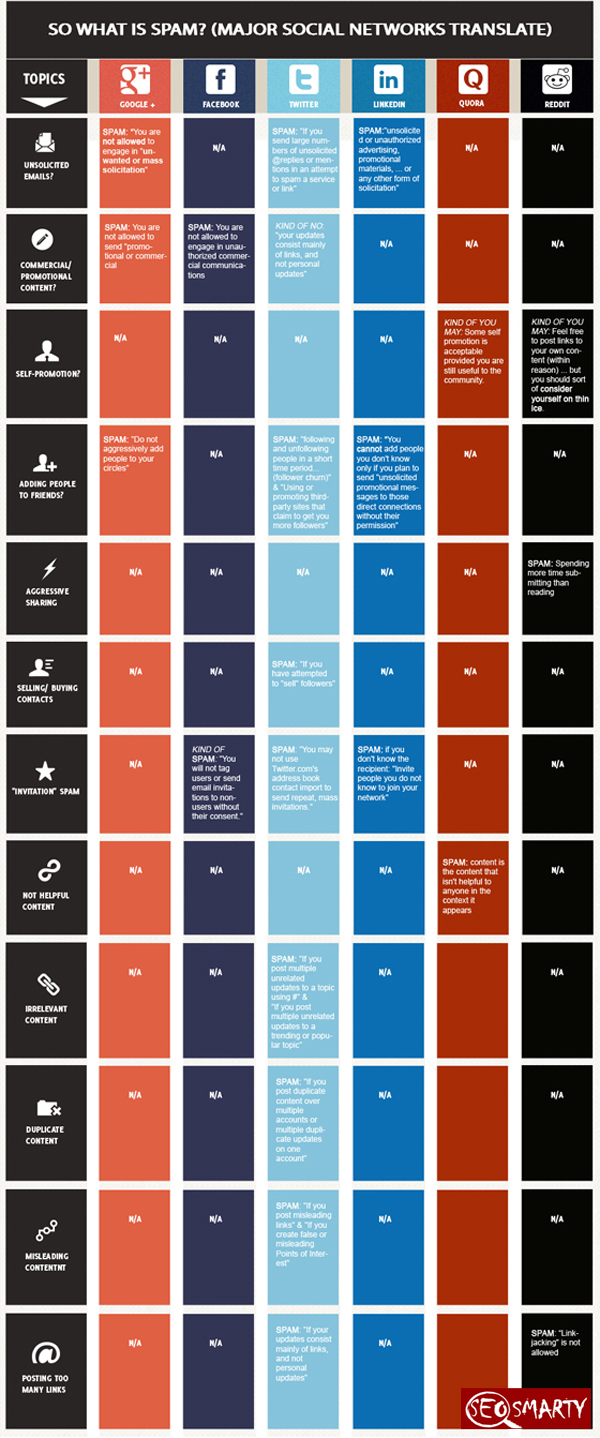

What we offer
Contact Info
802, Astron Tech Park, Satellite Road, Opp. Gulmohar Park Mall, Ahmedabad 380015, India
+91 9825025904
info@webpro.in
Daily: 9:00 am - 6:00 pm
Sunday: Closed
Copyright 2023 WebPro Technologies LLP © All Rights Reserved



